Book by James Pickett
Polymaths of Islam analyzes the social and intellectual power of religious leaders who created a ... more Polymaths of Islam analyzes the social and intellectual power of religious leaders who created a shared culture that integrated Central Asia, Iran, and India from the mid-eighteenth century through the early twentieth.
James Pickett demonstrates that Islamic scholars were simultaneously mystics and administrators, judges and occultists, physicians and poets. This integrated understanding of the world of Islamic scholarship unlocks a different way of thinking about transregional exchange networks. Pickett reveals a Persian-language cultural sphere that transcended state boundaries and integrated a spectacularly vibrant Eurasia that is invisible from published sources alone.
Journal Articles by James Pickett

Journal of the Economic and Social History of the Orient, 2019
This essay argues that recent theoretical literature on the archive contains critical insights fo... more This essay argues that recent theoretical literature on the archive contains critical insights for studies of Islamic documents, while also pushing to move beyond some of the core assumptions of that same literature. There is no question that the fundamental concerns of an "archival turn" are every bit as relevant to studies of Islamic societies, past and present, as they are to European-dominated ones. Yet investigating Islamic "archives" presents the challenge of coming to terms with a concept-the archive-and an attending set of assumptions and theoretical baggage derived almost exclusively from European history. To address this challenge, we propose that employing the term "cultures of documentation" offers a way of having one's cake and eating it too. In deploying this expression, we signal that there existed multitudes of textual practices and record-keeping activities in the pre-industrial Islamic world, and that it is possible to move away from "archive" as a term without abandoning the core insights and questions of the historical literature built around it.
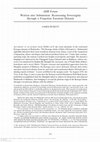
The American Historical Review, 2018
The Central Asian city of Shahrisabz has long been a historical footnote, widely regarded as an u... more The Central Asian city of Shahrisabz has long been a historical footnote, widely regarded as an unruly “province in rebellion” plaguing its more powerful overlords in Bukhara during the seventeenth through late nineteenth centuries. In fact, it was an autonomous city-state in its own right, and the mechanisms through which it has been written into submission in the historiography reveal much about historical methodology and premodern logics of sovereignty. To recover Shahrisabz’s story, this article pursues a non-hegemonic reading of hegemonic Persian writing (a strategy more frequently applied to colonial sources) and pieces together scattered textual fragments composed in the city itself. In doing so, it illustrates the ways in which variegated forms of symbolic submission and coercive power intersected to create complexes not easily mappable to modern binaries. Seemingly contradictory forms of sovereignty routinely coexisted within a single polity, and greater specificity is necessary to capture a kaleidoscope of permutations. Thus source methodology and sovereignty stand as two conceptual domains intrinsically intertwined, with insights into the latter possible only with careful attention to the former.
Studia Islamica, 111/2 (2016), 231-84

Persian language manuals uniformly adopt national categories such as Persian/Farsi (Iran), Dari (... more Persian language manuals uniformly adopt national categories such as Persian/Farsi (Iran), Dari (Afghanistan) and Tajik (Tajikistan). These categories at once impose an imagined contrast between the languages at the high register that is in fact marginal, while occluding profound linguistic variation within these nation-states at colloquial registers. Similar schemas apply to Central Asian Turkic languages such as Uyghur and Uzbek, which are closely related at the formal/literary register, but regionally diverse at lower registers. This dominant instructional approach ill prepares language learners for engaging the region on its own terms, rather than through the lens of nationalist aspirations. Students would be better served by an integrative method that teaches a transnational high language (in the case of Persian) while introducing a diverse range of dialects. This article was also adapted for a general audience in “On Language: The Many Flavors of Persian in Eurasia,” EurasiaNet, October 11, 2017.

Over the course of the 18th–early 20th centuries, a curious narrative emerged in Central Asia whe... more Over the course of the 18th–early 20th centuries, a curious narrative emerged in Central Asia wherein the Turko-Persian monarch Nadir Shah Afshar was converted from Shiʿism to Sunnism by a group of Islamic scholars outside of Bukhara. While this legend was rooted in Nadir Shah's theological ambitions to bring Shiʿism back into the Sunni fold as a fifth school of canonical law, the memory of that event in the subsequent two centuries was intimately tied to the establishment of several scholarly dynasties, which managed to perpetuate themselves all the way to the Bolshevik Revolution in 1917. This article engages the memory of this mythological conversion to explore sharpening conceptions of sectarian divisions and the role of genealogy in projecting spiritual authority. Most broadly, it argues that—far from a passing depredation—the Afsharid Empire profoundly shaped the geopolitical and social landscape of Persianate Asia.

The khanates of Bukhara and Khiva had much in common, but depictions of their relationship with o... more The khanates of Bukhara and Khiva had much in common, but depictions of their relationship with one another vary dramatically between historical sources. Some accounts convey deep rivalries between them, while in other sources they appear as easily traversable sub-regions within a broader, socially and culturally integrated landscape. How might we explain these wildly divergent images? This essay considers a wide range of sources to forward one simple argument: our understanding of the relationship between Bukhara and Khiva is fundamentally shaped by textual genre. Some genres – such as chronicles and legal writing – were well equipped to articulate rivalry and difference. Others – such as Sufi hagiography or chancellery documents – contained the tools for transcending these two polities. Since all of these genres were predominantly written by a single social group (the ulama), this contradictory imagery was not the product of discrete constituencies with different viewpoints, but rather a single milieu performing diverse genres.

Iranian Studies, Sep 2015
During the Second World War and its immediate aftermath the Soviet All-Union Society for Cultural... more During the Second World War and its immediate aftermath the Soviet All-Union Society for Cultural Ties Abroad (VOKS) engaged in an aggressive campaign of cultural outreach in Iran to promote socialist modernity amongst Iranian leftists. Iran represented VOKS’ first serious effort outside of Europe and one for which the Soviet Union was uniquely poised to exploit. VOKS tapped into the Soviet Union’s orientalist scholarly establishment inherited from the Russian Empire to pitch the argument that not only were Iran and the Soviet Union geographically continuous, they were both inheritors of the same Persianate cultural legacy – ironically a legacy that the Soviet Union had actively displaced in favor of Turkic national SSRs. Meanwhile, Iranian leftists were not passive receivers of Soviet propaganda. They exploited VOKS resources to found the Perso-Soviet Cultural Relations Society and establish regional branches throughout the country. In particular, Iranian intellectuals fixated on Soviet Azerbaijan and Uzbekistan as evidence of the abundant possibilities for a specifically Persianate articulation of socialist modernity. This paper leverages both Russian archival sources and Farsi periodicals and interview transcripts to explore this unique confluence of Soviet and Iranian ambitions.
Volume Chapters by James Pickett

The Cambridge History of Global Migrations, 2023
For the better part of a millennium — roughly from the tenth century to the early twentieth — a c... more For the better part of a millennium — roughly from the tenth century to the early twentieth — a continuum of Perso-Islamic high culture sustained intellectual exchange across much of Eurasia. A shared language, corpus of texts, and loose pedagogy integrated this territory, which in turn facilitated human migration. Wealth and power attracted literati from Isfahan to Delhi, religious networks pulled pilgrims from Sarajevo to Konya, and educational infrastructure lured students from the Volga-Urals to Bukhara. And when fortunes turned sour, this high cultural zone offered a safety net for exiles and refugees. Thus, this chapter traces the contours of Persianate migration — not migration writ large within the Persianate world, which could in principle imply any kind of movement within a territory where Persian language and literature circulated.

Oxford Research Encyclopedia of Asian History, 2023
Central Asia’s 18th and 19th centuries marked the definitive end of the nomadic empires that char... more Central Asia’s 18th and 19th centuries marked the definitive end of the nomadic empires that characterized the region’s geopolitics for over three millennia before the advent of colonialism. Although it is open to debate which polity was the last “empire of the steppe,” a strong case can be made for the Junghar confederacy, which contested the Qing Empire of China for dominance in Eurasia in the 17th and 18th centuries—ultimately unsuccessfully. The Junghars owed their early success to a combination of new gunpowder technology and nomadic military organization, and the fragmented city-states that emerged from Nadir Shah Afshar’s empire (1736–1747)—such as Bukhara, Khiva, and Khoqand—relied even more on musketeer infantry units composed of individuals without ties to the local Turkic military elite. The emergent fiscal-military states that characterized Central Asia on the eve of colonial conquest were thus quite novel in terms of structural power dynamics, yet thoroughly Turko-Perso-Islamic in terms of symbolism, law, and patrimonialism.
This period also witnessed what was in many ways the apex of Persianate high culture, building on traditions with roots stretching back to the Timurid period and earlier. Sufism in all of its forms became mainstream. Intellectual elites were polymathic, simultaneously mastering jurisprudence, poetry, medicine, occult sciences, and more. Vernacularization, particularly in literary Central Asian Turki, deepened these currents and carried them to new audiences. The new city-state dynasties competed with one another to build up educational centers to support all of these cultural forms.
Many of these cultural, social, and even political forms persisted under colonialism, even as the pace of change sped up. Some of the precolonial dynasties persevered under indirect colonial rule. Sufi brotherhoods and Islamic learning expanded, only to be snuffed out or transformed in the Soviet period. Only at the very end of the 19th century did colonial modernity—in the form of large-scale cotton cultivation, new understandings of national identity, print culture, and steam-propelled transport—begin to make significant inroads.
Asia Inside Out: Itinerant People, 2019
Dissertation by James Pickett
Dissertation Reviews, May 2016
A review of James Pickett, “The Persianate Sphere during the Age of Empires: Islamic Scholars and... more A review of James Pickett, “The Persianate Sphere during the Age of Empires: Islamic Scholars and Networks of Exchange in Central Asia 1747-1917” (Princeton University, 2015) by Rian Thum (Loyola University)
The Persianate Sphere during the Age of Empires: Islamic Scholars and Networks of Exchange in Cen... more The Persianate Sphere during the Age of Empires: Islamic Scholars and Networks of Exchange in Central Asia, 1747-1917
June 2015
Advisor: Stephen Kotkin
Committee: Michael Cook, Jo-Ann Gross, Michael Reynolds
Book Reviews by James Pickett
The Journal of Asian Studies, 2021
David Brophy's superb new translation of Muḥ ammad Ṣ adiq Kashghari's In Remembrance of the Sai... more David Brophy's superb new translation of Muḥ ammad Ṣ adiq Kashghari's In Remembrance of the Saints (Taẕ kira-i ʿAzızan) brings an important source on eighteenth-century Central Asian and Chinese history to a general audience.
The Oxus Society for Central Asian Affairs, 2020
Central Asian Survey, 2020
History: Reviews of New Books, 2019
First 50 downloads from the link are free.
Central Asian Survey, 2013
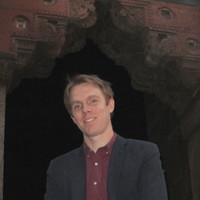


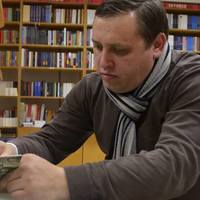



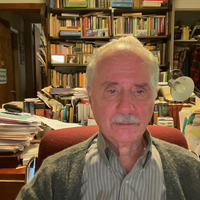

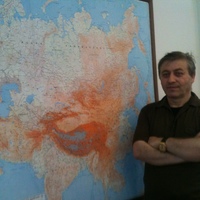

Uploads
Book by James Pickett
James Pickett demonstrates that Islamic scholars were simultaneously mystics and administrators, judges and occultists, physicians and poets. This integrated understanding of the world of Islamic scholarship unlocks a different way of thinking about transregional exchange networks. Pickett reveals a Persian-language cultural sphere that transcended state boundaries and integrated a spectacularly vibrant Eurasia that is invisible from published sources alone.
Journal Articles by James Pickett
Volume Chapters by James Pickett
This period also witnessed what was in many ways the apex of Persianate high culture, building on traditions with roots stretching back to the Timurid period and earlier. Sufism in all of its forms became mainstream. Intellectual elites were polymathic, simultaneously mastering jurisprudence, poetry, medicine, occult sciences, and more. Vernacularization, particularly in literary Central Asian Turki, deepened these currents and carried them to new audiences. The new city-state dynasties competed with one another to build up educational centers to support all of these cultural forms.
Many of these cultural, social, and even political forms persisted under colonialism, even as the pace of change sped up. Some of the precolonial dynasties persevered under indirect colonial rule. Sufi brotherhoods and Islamic learning expanded, only to be snuffed out or transformed in the Soviet period. Only at the very end of the 19th century did colonial modernity—in the form of large-scale cotton cultivation, new understandings of national identity, print culture, and steam-propelled transport—begin to make significant inroads.
Dissertation by James Pickett
June 2015
Advisor: Stephen Kotkin
Committee: Michael Cook, Jo-Ann Gross, Michael Reynolds
Book Reviews by James Pickett
James Pickett demonstrates that Islamic scholars were simultaneously mystics and administrators, judges and occultists, physicians and poets. This integrated understanding of the world of Islamic scholarship unlocks a different way of thinking about transregional exchange networks. Pickett reveals a Persian-language cultural sphere that transcended state boundaries and integrated a spectacularly vibrant Eurasia that is invisible from published sources alone.
This period also witnessed what was in many ways the apex of Persianate high culture, building on traditions with roots stretching back to the Timurid period and earlier. Sufism in all of its forms became mainstream. Intellectual elites were polymathic, simultaneously mastering jurisprudence, poetry, medicine, occult sciences, and more. Vernacularization, particularly in literary Central Asian Turki, deepened these currents and carried them to new audiences. The new city-state dynasties competed with one another to build up educational centers to support all of these cultural forms.
Many of these cultural, social, and even political forms persisted under colonialism, even as the pace of change sped up. Some of the precolonial dynasties persevered under indirect colonial rule. Sufi brotherhoods and Islamic learning expanded, only to be snuffed out or transformed in the Soviet period. Only at the very end of the 19th century did colonial modernity—in the form of large-scale cotton cultivation, new understandings of national identity, print culture, and steam-propelled transport—begin to make significant inroads.
June 2015
Advisor: Stephen Kotkin
Committee: Michael Cook, Jo-Ann Gross, Michael Reynolds
While most studies of pre-colonial Islamic bureaucracies focus on the administrative practices of a single state, this symposium traces the contours of a continuum of shared practices not reducible to any single polity or region. State officials from western China to India to Turkey and beyond wrote in the same forms of calligraphy using a common repertoire of genres and tapping into shared Islamic imagery and language. How did uniform cultures of documentation spread across such immense distances? When and why did pre-colonial states come to adopt “modern” bureaucratic practices? What was the role of the state archive in projecting the image of a sovereign state against competing claims to authority? Can we detect any lingering traces of these Islamic documentary cultures in the modern bureaucracies of Eurasia?
Studies of Islamicate documentation outside the Ottoman Empire have been few and far between until very recently. The result is that most of the available studies on archives and documents in the Muslim world are based on legal sources, i.e. texts the documentary attributes of which reflect either a probative or a precedential value alone. The problem with this approach is that it predicates on a reified meaning of document thereby misidentifying other possible uses of the written word and overlooking other principles behind the preservation of texts. A number of recent studies begun to revise this status quo by historicising the production and preservation of certain texts in an effort to complicate a dominant (yet untenable) narrative predicated upon the purported absence of archives and the ostensibly limited patterns of textual consumption prior to the early modern period – illuminating, for instance, the existence of chancery practices and dynastic archives under the Abbasids and the Mamluks. While a great effort has been made to prove that in the early Islamic and medieval period Muslim states did in fact rely on central administrative apparatuses, little has been done to reflect on what we may term coeval cultures of documentation, by which we mean the assumptions that informed the functionality of writing and governed the preservation of texts in a certain period. By ignoring such questions, historians of the Islamicate world have risked their superimposing a commonsensical understanding of the documentary attributes of texts onto historical material that may well require a different hermeneutical approach.
We contend that a solution to this problem demands that we expand our informational basis and take a larger number of compositional genres into our purview. To achieve this goal, we propose to reflect on the meanings of documentation across a larger historical area of the Muslim world, which is termed “the Persianate”. With this symposium we thus bring together scholars who work on material either in Persian or in languages directly influenced by Persian such as Urdu, Chaghatay, Marathi, Ottoman, Tatar, and Uyghur across the early-modern and modern period.
By addressing the following questions, the symposium sets for itself the task of outlining a comparative history of documentation early modern and colonial periods across the Middle East, Central and South Asia:
• What makes an archive in the Persianate world, and what are the practices of documentation therein?
• Should we distinguish between archives and private collections?
• Why did dynasts preserve certain texts and how did they use them?
• Was the creation and the preservation of archives reflective of a certain historical consciousness?
• Did the preservation of texts alter their original meaning? How do we take stock of the aspirational aspect of recordkeeping?
• What was the relationship between archival practices and public knowledge?
• How did the culture of the spoken affect archival practices?
• What was the nature of interaction between manuscripts and practical documents – in terms of authorship, worldview, functionality and genre conventions?
Proposals should include paper abstracts of up to 500 words and a short CV (no more than 2 pages) of each speaker. Please send your proposal to paolo.sartori@oeaw.ac.at by 1 December 2015 at the latest. Travel and accommodation costs for invited speakers will be covered by the Institute of Iranian Studies within the framework of the Seeing Like an Archive Project https://seeinglikeanarchive.wordpress.com/. As a publication on the basis of the workshop is envisaged, please be prepared to circulate paper drafts in advance.
Adapted from: James Pickett, “Categorically Misleading, Dialectically Misconceived: Language Textbooks and Pedagogic Participation in Central Asian Nation-Building Projects,” Central Asian Survey 36, no. 4 (December 2017): 555–74.
(Revised for spring 2019 semester.)